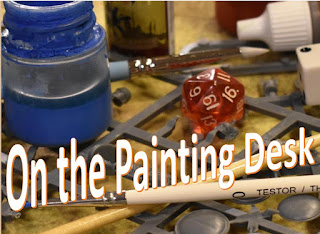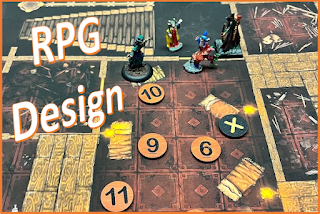For the first time in a bit, the True Crit Gaming Guild busted out Castles in the Sky. We had a French, British, and American fleet. Since it had been a while since we had played, we decided to keep things simple and stuck with a Battleship, Cruiser, and Escort per side. That would give us a chance to recall how to play the game. We didn't even bother with any special mission objectives or anything.
The Americans had been patrolling near Paramaribo in the territory of the Netherlands, as part of a diplomatic effort to win their support at the Hague. However, the nearby British and French were not happy to see an American force so close to their Spheres of Influence. A Fleet for each power was deployed from Georgetown and Cayenne (respectively) as a precaution and a warning.
However, they did not realize that the American flotilla was commanded by Rear-Admiral Thomas, a notoriously aggressive commander. As the three fleets began to converge just north of the border with Brazil, the Europeans soon realized their error. The American commander raised the battle colors and signaled for the other two fleets to stand-down. The two European commanders declined the offer and battle was soon joined.
The Forces
Americans
1 Michigan class Battleship - Comm 2
1 Denver Class Cruiser - Comm 3
1 Bainbridge class Destroyer - Comm 2 - Air Torps
The French
1 Charles Martel Class Battleship - Comm 3
1 D'Iberville Torpedo Cruiser - Comm 2
1 Chasseur Destroyer - Comm 1- Air Torps
The British
1 Queen Elizabeth Class Battleship- Comm 3
1 Warrior class Cruiser - Comm 3
1 Bull Finch class Destroyer- Comm 2 - Air Torps
Set-up
Our table was a 4ft-by-4ft board, and each MU was 1 inch. The Americans and British took opposite corners, and the French were in the center on the far side. The Americans and British deployed high and fast, with the French going at mid-range and speed.
There were no clouds or cloud cover. There were a few rock formations at 1-4 altitude.
Maneuver Phase
Despite being aggressive, the American commander was not up to the task of outmaneuvering the European forces. The other two admirals continuously outperformed the United States on Initiative checks and gaining Commands.
The French seemed willing to take on the Americans and veered that way, as the other two fleets seemed eager to get to close the range and start pounding on each others ships. The French manages to strike first blood as an Air Torpedo barrage from the wily French detonated the American Destroyer early in the battle, without the scouting and intelligence gathered by this ship; the Americans struggled with their Command-and-Control.
Worse, the Destroyer exploded and damaged the US flagship as well in the blast!
Battle Phase
The French sent their cruiser to try and snipe and distract the British fleet closing in on the main melee. However, the French captain miscalculated the range and power of the British fleet. The poor cruiser found itself getting pounded by the British guns at range! It was soon damaged and stalled.
The American Cruiser was also eager to mix it up with the British, under-estimating their combined firepower for dealing with cruisers. The Queen Elizabeth got in close and simply pounded the poor dear with heavy batteries at close range. The Denver was ripped apart and exploded for her trouble, barely scratching the Queen Elizabeth's paint in the process.
Meanwhile, the French and US Battleships got in a gunnery duel at mid-altitude and slow speeds. The two large ships exchanged gunfire. Neither side seemed to gain the upper-hand. However, a lucky shell disabled the Michigan's Air Screw, and the ship immediately stalled. With their airship stalled and sinking fast, the Michigan struck her colors. This left the US out of the fight.
End Phase
The French D'Iberville was stalled and taking a beating from the Warrior and Bull Finch. The crew valiantly tried to get her operational and moving again, but the enemy firepower was too much. The Warrior raked the poor French ship and she struck her colors as a smoking wreck.
From there, the damaged French Battleship and Escort played cat-and-mouse with the Queen Elizabeth and her friends. However, after an exchange that left the Chasseur and the Charles Martel damaged further, they signaled for an end of hostilities.
The British were gracious in victory. After all, their ships had barely had their paint scuffed.
Conclusion
The British fleet ruled the skies, as is fitting. They took no damage, while the French lost 12, and the Americans lost 22 Armor. A clear British victory in a hard-fought battle.
Anytime I face a Queen Elizabeth Dreadnought, it is a challenging game. The French Battleships is no match in a one-on-one fight with it. It requires cunning and guile to win. The Warrior and Queen Elizabeth co-ordinate their fire very well in this game, and the Americans and French paid the price for it. Never bring a Cruiser to a Battleship fight!
We did misplay Friction for a few turns, but we got it figured out by the end. It would not have made much of a difference in the final result. However, we did see lots of fun stuff like stalling, Commands, Exploding and Sinking in action!
Until next time!
Or purchase all out games at the Blood and Spectacles Publishing Wargames Vault Page!






























